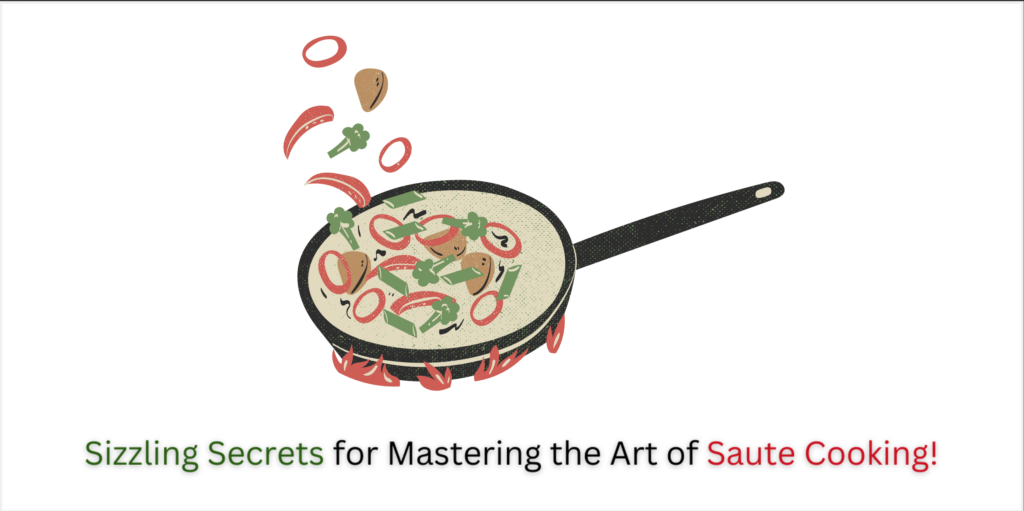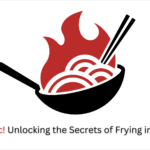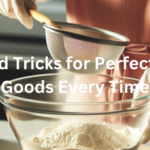Saute cooking techniques are explained in this post. Sauteing is a crucial culinary technique for quickly bringing out the flavours of food and creating a delicious meal. If you aspire to learn how to saute like an expert, you’ve come to the correct place. This blog post will reveal tips for mastering saute cooking, including the necessary equipment, techniques, and recipes. So grab your apron, and let’s begin!
What is Saute Cooking?
Saute cooking is a French technique that involves cooking food with a small amount of fat over high heat. This cooking method suits various foods, including vegetables, meat, and fish. Saute cooking is an excellent method for quickly bringing out the flavour of food and creating a delectable meal.
Understanding the fundamentals of saute cooking is critical if you’re new to it. Sauteing is a dry-heat cooking method, which means no liquid is added to the pan. Instead, the food is cooked in its original natural juices or with very little fat.
High heat is essential for successful sauteing. This will allow you to sear the food quickly and create a golden-brown crust. However, it is also critical to keep an eye on the food, so it does not burn. Cooking food for a few minutes on each side is a good rule of thumb.
Essential Saute Cooking Equipment
The equipment you use is one of the essential factors when sautéing. The right tools will make your job easier and will assist you in creating the perfect meal. It is one of the critical factors of Saute cooking techniques. Here are some essential pieces of saute cooking equipment:
- Skillet: A skillet is a must-have piece of cooking equipment for sauteing. For even heat distribution, use a heavy-bottomed skillet, such as cast iron.
- Spatula: A spatula is an indispensable kitchen tool for flipping and stirring food. To avoid melting, use a heat-resistant spatula.
- Tongs: Tongs are helpful for safely flipping and turning food.
- Wooden spoon: A wooden spoon is ideal for stirring food and scraping up any bits that may have gotten stuck to the bottom of the skillet.
- Oil or fat: Sautéing requires the use of oil or fat. The type of oil or fat you use will be determined by the food you prepare.
- Salt and pepper: Seasoning your food with salt and pepper is essential.
Preparing Ingredients for Saute Cooking
Once you have all the required tools, it’s time to start preparing the ingredients for saute cooking. Make sure your ingredients are prepped and ready to go before you begin. This will allow you to cook more efficiently and make sure your meal is cooked evenly.
Make sure to cut your ingredients into small, even pieces when preparing them for sauteing cooking. This will allow them to cook more evenly and quickly. Vegetables can be cut into cubes, strips, or slices. Meat and fish can be cut into cubes, strips, or fillets.
It is also critical to season your ingredients before cooking. This will improve the flavour of the food. Season your ingredients with salt, pepper, and other spices.
Saute Cooking Techniques
Now that you’ve gathered all the necessary equipment and ingredients, it’s time to learn the fundamentals of saute cooking. The following are the essential techniques to master:
- Heat the skillet: Before you begin cooking, heat the skillet over medium-high heat. This will make sure that the food is cooked evenly and quickly.
- Add the oil or fat: When the skillet is hot, add the oil or fat. Stir the pan to ensure that the bottom is evenly covered.
- Add the ingredients: Layer the ingredients in the pan evenly. Avoid overcrowding the pan since this may cause the food to steam rather than sauté.
- Flip and stir: Using a spatula or tongs, stir and flip the ingredients. As a result, the meal will cook more evenly on all sides.
- Finish cooking: When the food is done, remove it from the stove and move it to a dish or bowl.
Learning new things will help you keep your mind and body healthy.
Tips for Sauteing Different Types of Food
Now that you’ve mastered the foundations of saute cooking, here are some ideas for sauteing various foods. These tips are important for becoming skilled at Saute cooking techniques.
- Vegetables: Make sure the vegetables are chopped into uniformly small pieces. This will allow them to cook quickly and evenly. Also, You can add a little water to the pan if necessary.
- Meat and fish: Thoroughly season the meat and fish before cooking. By doing so, their flavours will be enhanced. Furthermore, cook the meat or fish until it is well done without overcooking it.
- Rice and grains: Cook rice and other grains with fat or oil to enhance their flavour. Stir often to prevent the grains from sticking to the pan.
Saute Cooking Safety Tips
It is vital to take safety precautions when sautéing. Here are some measures to keep in mind:
- Use a heatproof spatula: Use a heat-resistant spatula to keep it from melting.
- Don’t overcrowd the pan: Avoid overcrowding the pan since this may cause the food to steam rather than sauté.
- Use a splatter guard: When cooking with a lot of oil or fat, use a splatter guard to prevent hot oil splatters. It is vital to protect your eyes from splatters.
- Keep an eye on the food: To avoid burning, keep an eye on the food.
Troubleshooting Tips for Saute Cooking
Cooking on a saute pan might be challenging at times. Here are some troubleshooting instructions to guide you to achieve the best results. These tips will enhance your Saute cooking techniques:
- Food sticking to the pan: If the food is sticking to the pan, turn up the heat or add more oil or fat.
- Food is burning: If the food is burning, reduce the heat or remove the food from the pan.
- Food is undercooked: If the dish is undercooked, try increasing the heat or cooking it for a few minutes longer.
Conclusion
Sautéing food to bring out its nuances can quickly produce a delicious meal. With the right tools and methods, you can quickly master the art of saute cooking. We truly hope you found this post useful and that it gave you some excellent suggestions for mastering the art of saute cooking. Happy Sautéing!



